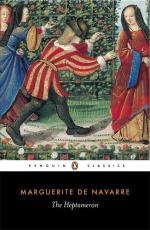The accession of Francis gave a more important position to Margaret and her husband. The latter was already one of the leading personages of the state, and new favours increased his power. He did not address the King as “Your Majesty,” says Odolant Desnos, but styled him “Monseigneur” or “My Lord,” and all the acts which he issued respecting his duchy of Alencon began with the preamble, “Charles, by the grace of God.” Francis had scarcely become King than he turned his eyes upon Italy, and appointing his mother as Regent, he set out with a large army, a portion of which was commanded by the Duke of Alencon. At the battle of Marignano the troops of the latter formed the rearguard, and, on perceiving that the Swiss were preparing to surround the bulk of the French army, Charles marched against them, overthrew them, and by his skilful manouvres decided the issue of the second day’s fight. (1) The conquest of the duchy of Milan was the result of this victory, and peace supervening, the Duke of Alencon returned to France.
1 Odolant Desnos’s
Memoires historiques sur Alencon, vol.
ii. p. 238.
It was at this period that Margaret began to keep a Court, which, according to Odolant Desnos, rivalled that of her brother. We know that in 1517 she and her husband entertained the King with a series of magnificent fetes at their Chateau of Alencon, which then combined both a palace and a fortress. But little of the chateau now remains, as, after the damage done to it during the religious wars between 1561 and 1572, it was partially demolished by Henry IV. when he and Biron captured it in 1590. Still the lofty keep built by Henry I. of England subsisted intact till in 1715 it was damaged by fire, and finally in 1787 razed to the ground.
The old pile was yet in all its splendour in 1517, when Francis I. was entertained there with jousts and tournaments. At these gay gatherings Margaret appeared apparelled in keeping with her brother’s love of display; for, like all princesses, she clothed herself on important occasions in sumptuous garments. But in every-day life she was very simple, despising the vulgar plan of impressing the crowd by magnificence and splendour. In a portrait executed about this period, her dark-coloured dress is surmounted by a wimple with a double collar and her head covered with a cap in the Bearnese style. This portrait (1) tends, like those of a later date, to the belief that Margaret’s beauty, so celebrated by the poets of her time, consisted mainly in the nobility of her bearing and the sweetness and liveliness spread over her features. Her eyes, nose, and mouth were very large, but although she had been violently attacked with small-pox while still young, she had been spared the traces which this cruel illness so often left in those days, and she even preserved the freshness of her complexion until late in life. (2)
1 It is preserved at
the Bibliotheque Nationale in Paris,
where it will be found
in the Recueil de Portraits au
crayon par Clouett Dumonstier,
&c, fol. xi.




